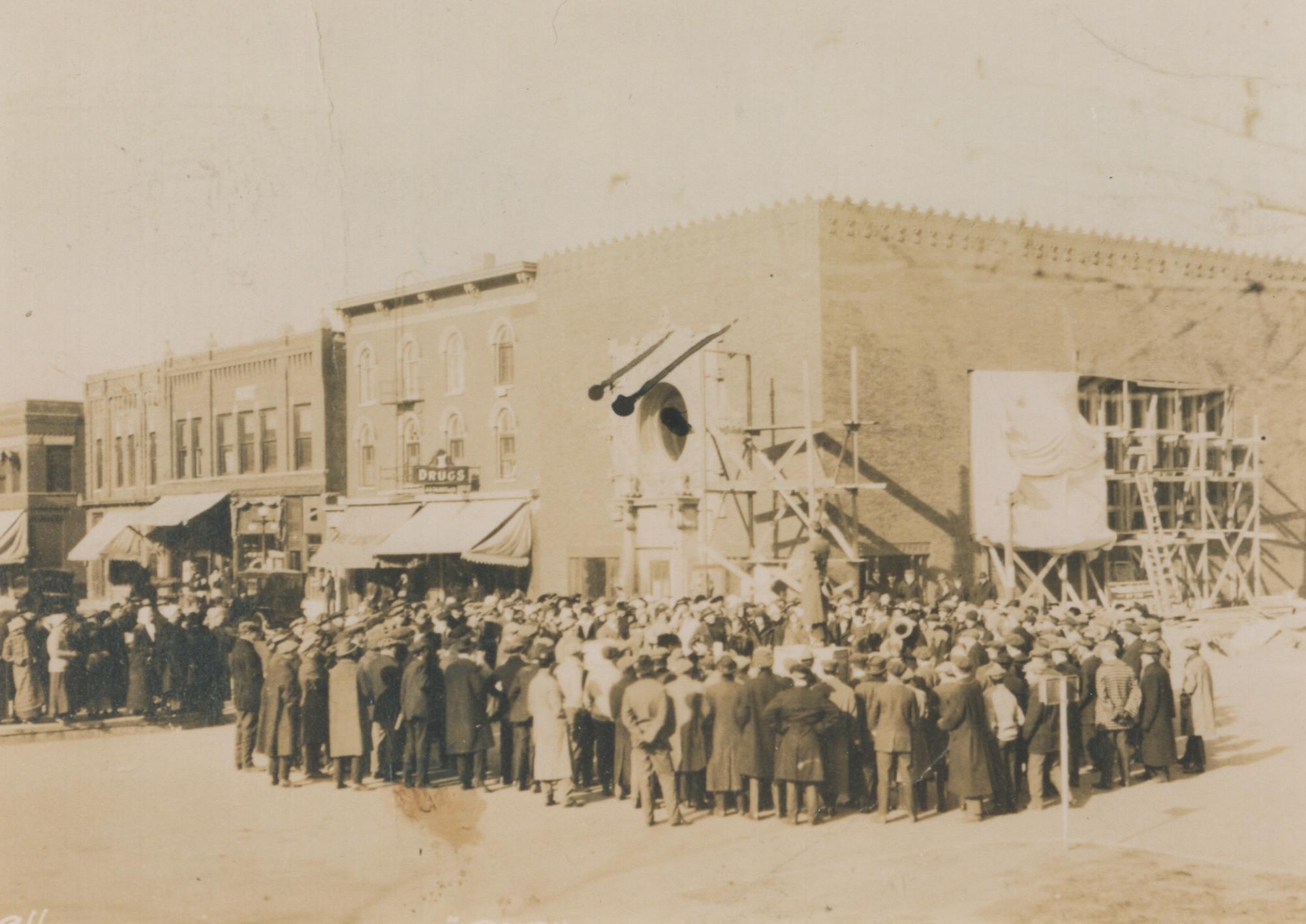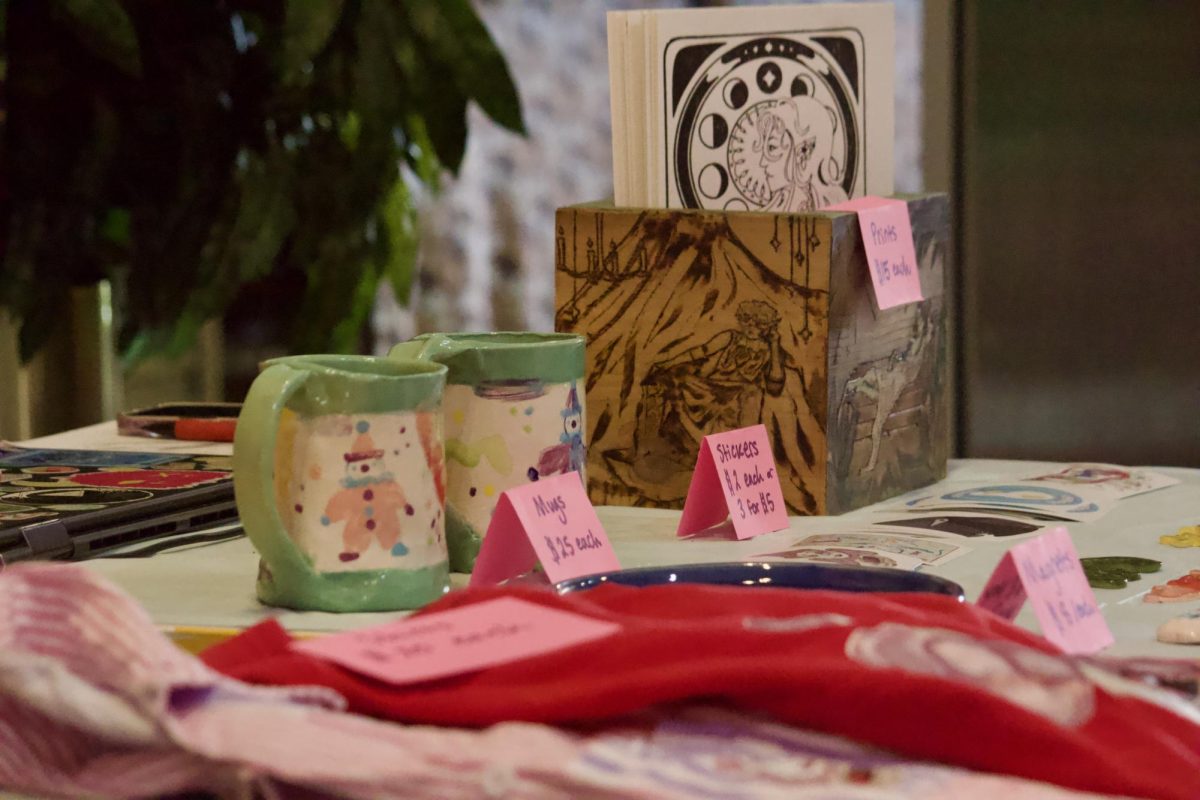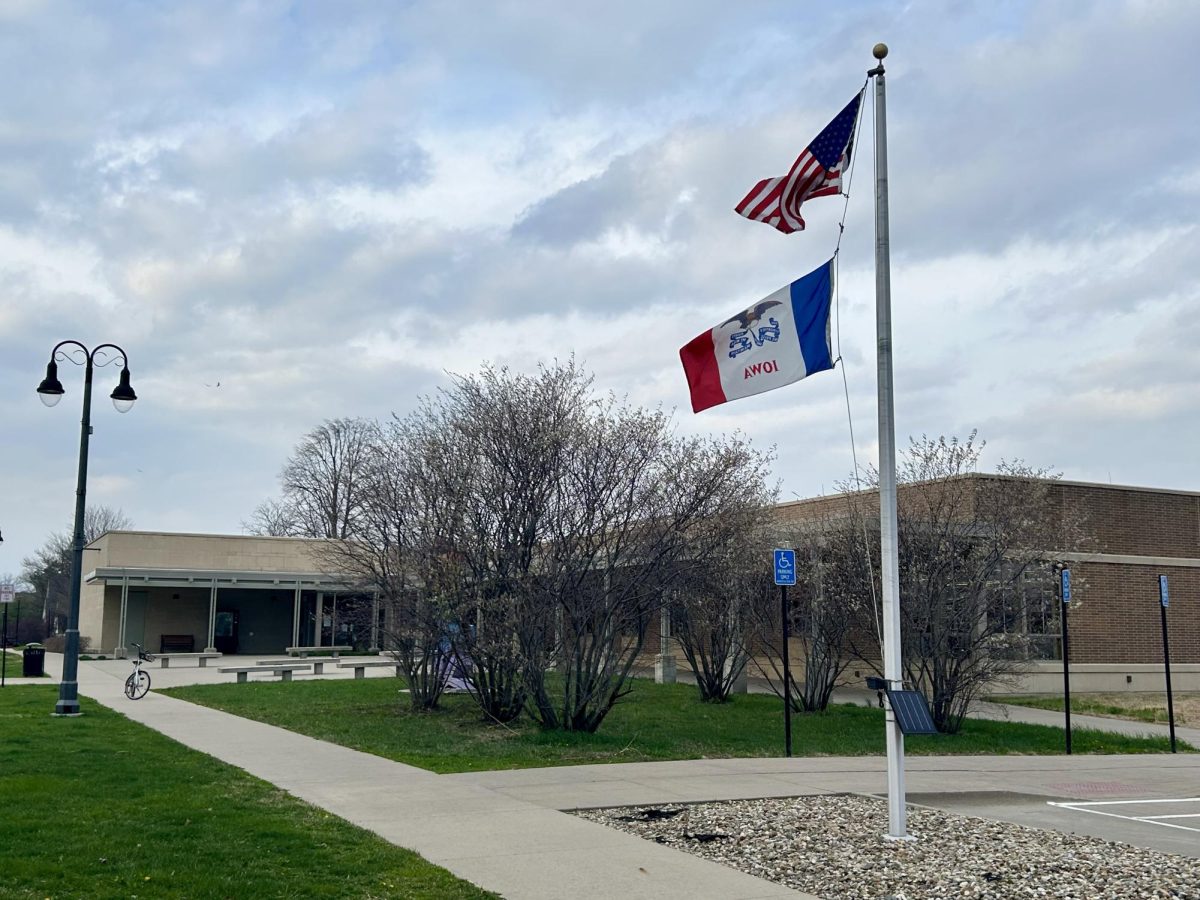When Jessica Trivedi went to check out Grinnell ahead of her July 2024 move-in to the town, the first thing she did was drive by her new home. The second stop — the bank.
At the corner of 4th Ave. and Broad Street is the Louis Sullivan Jewel Box Bank, known for its architect Louis Henri Sullivan of Chicagolandian skyscraper fame. The Grinnell jewel box could come to be known for architectural beauty and house many different operations since its beginnings as Merchants National Bank. In 1976, it was registered as a national landmark.
Not a functioning bank since Brenton National Bank moved out in 1999, the Chamber of Commerce now rents the building as a workspace from Wells Fargo next door. Today, these two spaces are adjoined but split by glass doors.
After the Grinnell directors of Merchants National Bank, established in 1883, saw Sullivan’s bank in Owatonna, Minnesota, they commissioned him to elevate their institution into “a building absolutely new and modern.” The project cost $60,000 at the time, estimated to be $1.9 million today.
“We’ve got a lot of historical buildings, but with more personal ties to the community,” said Kendra Vincent, member engagement coordinator for the Chamber. “This is really the only historical building that’s got a national tie for folks.”
Trivedi is currently the only volunteer docent for the bank. She grew up in Lakeview, a neighborhood in Chicago filled with Sullivan’s architecture. Places with Sullivan’s original architecture are sometimes referred to as “Sullivan towns.”
“It’s like a song your mom listened to when you were a kid,” Trivedi said about establishing herself in another Sullivan town. “It has that familiarity of like, home.”
Grinnell’s “jewel box” bank is one of eight in Sullivan’s small Midwestern town series. These banks were the architect’s late-career project, seeking to establish himself. Like other members of the Prairie School, an architectural movement Sullivan was not in but is considered a progenitor of, the architect had dreams of the “organic,” a term architect and student of Sullivan’s Frank Lloyd Wright pushed forth.
Trivedi’s volunteer position requires that she comes in on Saturdays from 10 a.m. to noon to give tours. She meets a range of visitors — parents of College students and managers of Prairie School Facebook groups and people who have been living in Grinnell for a long time, some of whom having gone through a majority of their lives never having been inside the landmark. She said some visitors believe the jewel-box to be a former church.
Dr. Alfredo Rivera `06, assistant professor of art history, teaches the Grinnell jewel box in courses on modern architecture and introduction to art history. They said they showed off to their architecture historian friends that they would be “teaching Sullivan in a Sullivan town.”
“There is a notion of the divine within this structure that represents capitalism at its very base,” said Rivera.
Despite having an interest in architecture when they were a student at the College, however, Rivera never went into the bank.
“Blindness is something that people joke about today. You’re nose blind, or eyebrow blind,” said Vincent, who works in the building. “And I do think to an extent, we get a little bit of this building blindness.”
Yet, in written accounts about the Grinnell jewel-box, there is hardly a treatment of the building that does not comment on its beauty and the awe it inspires.
On New Year’s Day, 1915, the shifting functionality of the building opened as Merchants National Bank, its name reinstated on the current facade. Two local newspapers — the Grinnell Herald and the Grinnell Register, before the 1936 merger into what is now known as the Grinnell Herald-Register — reported on the bank’s opening.
“When one has inspected this building he departs with a conviction that he has seen something new in banks,” wrote the Grinnell Herald.
The Grinnell Register opted to align Sullivan’s work with Near Eastern culture and religions, writing that “the man who drew up the designs must have steeped himself in Arabian Nights, Arabian Days and the Tales of Persian Fire Worshippers.”
While the architectural ornateness of the building could be one reason why people lined up around the block for the opening of the Bank, Vincent said that many were also there to witness the town’s first public water fountain. The fountain, no longer situated in the building, would have greeted visitors at the main entrance before the check stand. The interior was also stocked with self-watering plants.
The Register heralds this new institution with a nod to the colonial history of the Americas: “When Columbus crossed the Atlantic he discovered a new country which Mr. Sullivan thinks is entitled to a new architecture of its own…His art calls to him to portray the spirit of America.”
In the early 1900s, the country was shifting away from bimetallism, a gold and silver-based currency system, and farmers distrusted banking institutions. Sullivan’s job, said Trivedi, was to create a place where people could feel proud and safe to deposit and keep their money. The bank wanted to emulate a Victorian women’s jewelry box while also balancing transparency.
“The bank manager could see all the tellers, and the President of the bank could see everybody. The wives had their own women’s office, one in the front on the left, and they could sit there and see their husband,” said Trivedi.
In 2024, the experience of visiting the jewel-box, not dissimilar to entering into a keyhole, is “opulent and welcoming,” said Rivera.
In preparation for Grinnell’s sesquicentennial (150th) celebration in 2004, several civic Grinnell entities, including the City of Grinnell, Imagine Grinnell and others, collectively organized a “What’s Grinnell?” slogan contest. The goal was to implement a new branding and tagline for the town.
The three semi-finalists were “Iowa’s Heart With a World Beat,” “Jewel of the Prairie,” and “Rooted in the Prairie, Reaching ‘Round the World.” Four people had submitted something related to the jewel. The former slogan was “City of Light.”
Strategic America, a marketing agency based in Des Moines, would go on to design the new jewel box-inspired logo. This logo extracts and simplifies the ornateness of the facade into a couple of overlapping squares and a single circle.
In downtown Grinnell, Central Park’s remodel drew from the jewel-box for aesthetic inspiration, including the gazebo and stage. Like the ornate facade, these newer structures were made with terracotta. Designed by Des Moines-based architecture firm RDG Planning & Design, this redesign was a part of a larger place-making campaign that aimed to unified several disparate construction projects, including improvements to street signs and the I-80 entrance along Highway 146.
The road intersection, outside the bank at 4th Ave. and Broad Street, also bears this symbol, marked by brown-red cement.
During Grinnell jewel-box tours, a fact that gets flaunted is the number of original pieces the building still contains. Trivedi said, “People saw the real estate as being more the ground to rebuild than what was already there.”
As the jewel box stays in Grinnell, there is a physical reminder of this history. During the time Sullivan was sketching the blueprint for the bank, people reported seeing Sullivan with a legal pad he bought at a drugstore and observing and drawing the Grinnell landscape. Acorns, oak leaves, and sycamore leaves are just some of the natural aspects of Grinnell embedded into the bank’s design.
“I wonder where he stayed and did he walk down my street?” said Trivedi.
Sullivan’s work has similarities to the Art Nouveau movement, an art movement dedicated to decadence prevalent in Europe, though he put an American spin on it, Rivera said. Sullivan attached specific nationalistic ideals of ingenuity and individualism pervasive at the turn of the 20th century. Often presented as the “Father of the Skyscraper,” this fits into “the gendered ideals of empire,” according to Rivera.
Coming from Miami to Grinnell, Rivera said that they had misperceptions about being in a rural small town and that the bank facilitates “thinking more expansively about this town we share.” They continued, “We could be critical about the sort of analogy and branding of the gem, but it is also something that allows the town to sort of stand out within its broader Iowa context, that there’s more than appears on the surface.”
Rivera also references the recently installed wheat paste murals, which celebrate Edith Renfrow Smith `37’s family and other aspects of Grinnell history, as a “beautiful project” that also seeks to expand consideration of living here.
“One of the realities — and one of the things I think we try to emphasize in our architectural history classes — is that the production of architecture is a collective endeavor. It’s never a singular architect working on it,” said Rivera.
The jewel-box bank, as a symbol for the town of Grinnell, seeks to encapsulate both the local and the national at once. However, Henry Loomis `26, a studio art major who makes art inspired by the bank, said that he sees some of Sullivan’s designs as “maximalist and explosive, but also very contained, as if it’s something that could spread outwards” as more representative of the origin of life. Here, he cites the seed germinating on the rose panel and that twists along the sides of the entrance look like DNA strands.
“I am inspired, both ideologically and aesthetically by this beautiful, magical bank,” Loomis said. “And I don’t care that [the bank] is capitalist.”
Over the summer, he made a Midwestern jewel box series, log cabin-style quilt, in which eight of the jewel box banks form the border, and the prairie is in the middle.
“People need to start looking at it and start thinking about the role of nature and the prairie in their lives,” said Loomis. “How empty we would feel without these representations of nature and without these aesthetic joys.”






